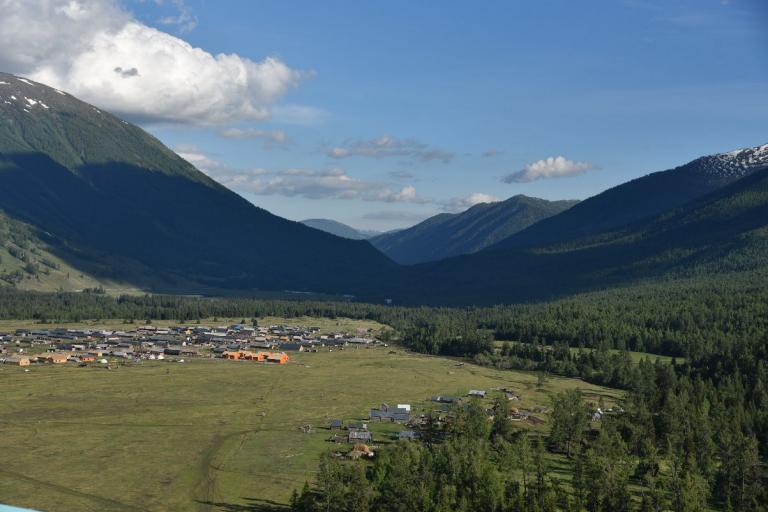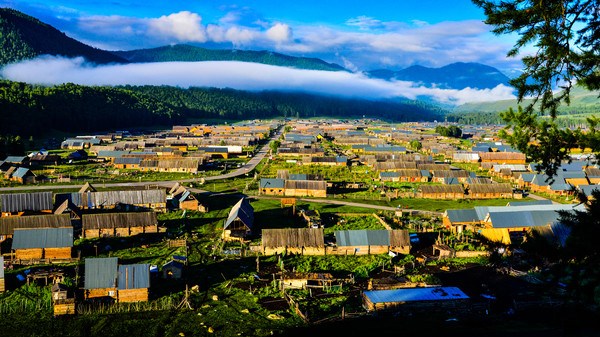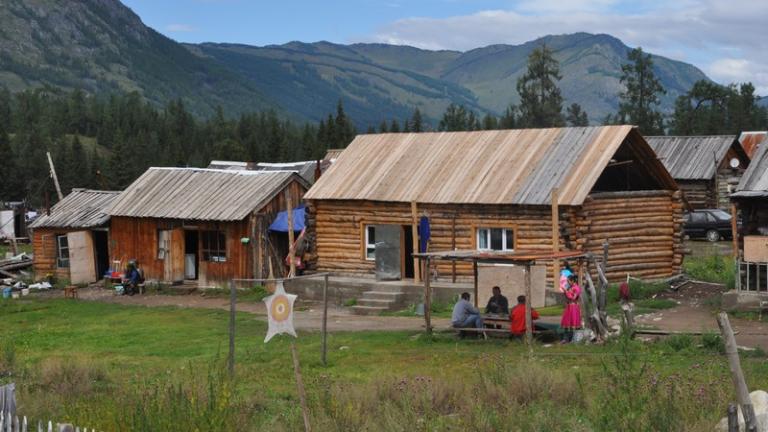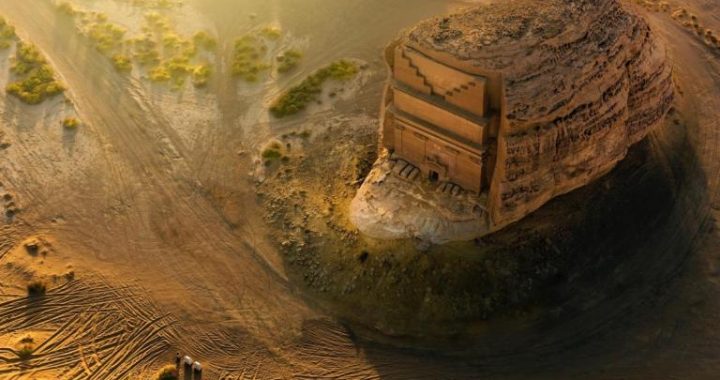Tuva village beside Kanasi lake
3 min readTuva village is located in the area of Kanasi lake deep in the altai mountains of Burgin County, Xinjiang. The narrow canyon between two peaks is just big enough for 80-somedwellings. The tuva people have made their living from raising sheep and cattle and hunting for many generations. Deep in the dense forest, they seldom have contact with the world and have clung to their traditional lifestyle. Since the famous scenic spot of Kanasi Lake northwest of the village was opened up to tourists, people have been gradually learning about this tranquil and beautiful village .

The Tuva people are herders who belong to one of the oldest ethnic minorities in northern China. The total current Tuva population of Kanasi Village and the neighboringHemu Village is a little over 2, 900. The Tuva language, which belongs to the family of Turkic languages, is one of the rarest currently used languages in China, though mongoliar has become more common in schools for Tuva people. The tuva people believe in Tibetan Buddhism and most still believe in shamanism. They customarily celebrate the traditional Mongolian holiday of Aobao, as well as the local Zoulu (Beginning of Winter) festival and the han Chinese new year and Lantern festival.
The tuva language does not have a written form and therefore has left no written history and local records say very little about them. A common local opinion holds that they are descendants of people ghengis khan left behind on his westward march. Looking at the modern Tuva people, it can be seen that they physically resemble mongolian people, andthat their clothing, accessories and daily habits are basically the same as well. In terms of religious belief, the tuva and mongolians both currently believe in Lamaism and both have retained some customs from shamanism. The great majority of tuva people believe they are connected to Ghengis Khan and all tuva homes display his picture.

The dwellings of the Tuva people are unusual. They are all made of wood and a single color. In addition, because the small wooden cabins are all perfectly lined up, it gives the village a very neat and order ly look. Moreover, the houses are all surrounded by picket fences making the village strongly resemble a village in northern Europe. Behind the tuva village stands Friendship peak on the Sino-Russian border with its snowy peaks. The village arises every day at the crack of dawn, and the rays of the sun turn the forests of white birch trees on the slopes to gold while the cattle and sheep casually mill about, making a fascinating scene. Wooden bridges, running water, villages, white birch, cattle ship constitute the most beautiful scene here.
The Kanasi tuva village and Kanasi lake complement each other. The area is surrounded by verdant mountains and limpid streams, and the beautiful environment is a unique attraction of the scenes of humanity and ethnic character of the kanasi tourist region Tourists coming from afar can not only appreciate the exotic beauty of the natural scenery, but also visit the natives of the village of the tuva people and learn about the unique folk customs of the Tuva. The Tuva often say of the area that it has seven months of winter and five months of summer.Winter snow cuts off the village from the outside and they often fill their days drinking.Someone once took a survey that indicated the people of the village consume 45 tons of alcohol during the winter.









